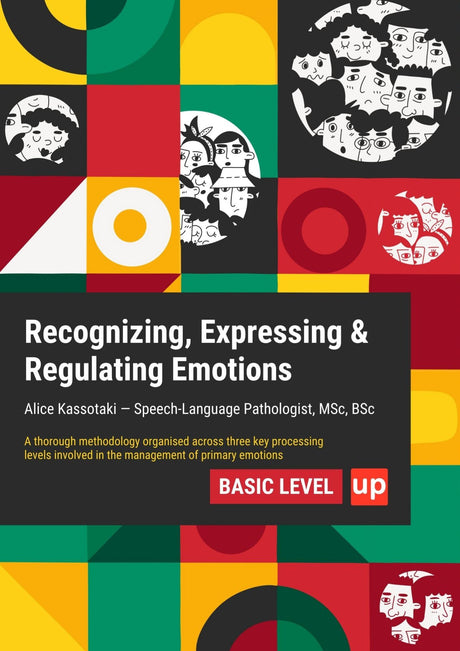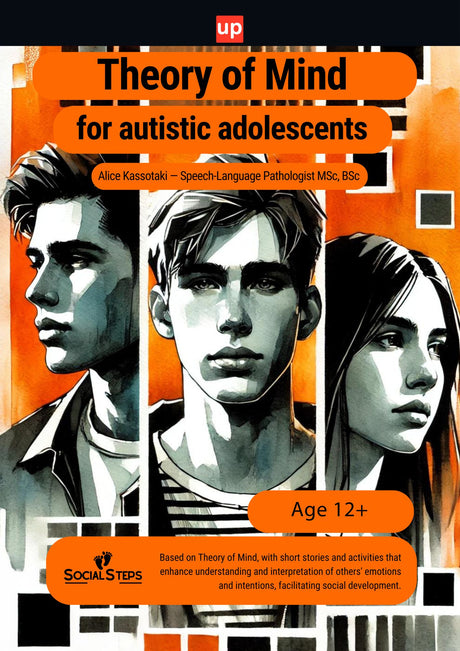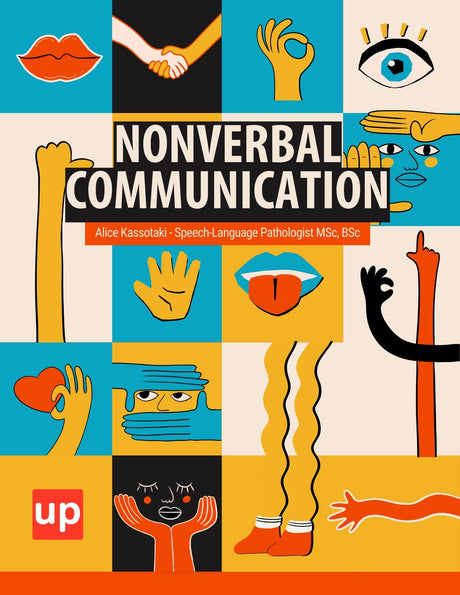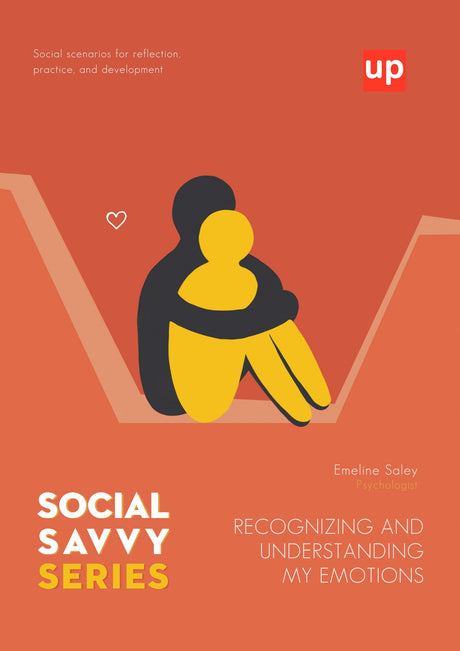Academic knowledge opens doors, but social skills are what allow students to walk through them confidently and build a successful life. In today's classrooms, where students navigate complex social interactions both in-person and online, the explicit teaching of these skills is no longer an optional add-on but a core component of education. As educators recognize this necessity, the use of social-emotional learning (SEL) curriculum has surged, with 83% of school principals indicating their schools used one by the 2023-2024 school year. This shift underscores a critical understanding: social competence is the bedrock of positive behavior, strong relationships, and ultimately, academic and life success.
Key Points
- Teaching social skills in the classroom is essential for fostering positive relationships, emotional management skills, and social competence that support both academic success and lifelong well-being. Social skills can be taught systematically, much like academics, with parallels in assessment, lesson planning, and instruction.
- A strategic, systematic approach involving direct instruction, modeling, role-playing, and integration into daily classroom activities ensures effective social skills development for all students.
- Tailoring instruction to diverse learners, collaborating with support staff, and engaging families extends the impact of social skills teaching beyond the school day, creating a strong foundation for students’ social and emotional growth. The benefits of teaching social skills include short-term academic improvements and long-term societal gains.
The Strategic Framework: A Systematic Approach to Social Skills Instruction

Effective social skills instruction is not accidental; it requires a deliberate and strategic framework. Teachers who approach this as a core part of their curriculum see the most significant impact. Schools should be focused on holistic development, including social, emotional, and academic skills. This involves understanding what to teach, assessing where students are, and setting clear goals for growth.
Understanding Key Social Skill Domains: What We Aim to Teach
Before teaching social skills, we must define what they are. Instruction should focus on a comprehensive list of domains that work together to build social competence. These key areas include communication (both verbal and non-verbal), cooperation and teamwork, empathy and perspective-taking, emotional regulation, self-awareness, and responsible decision-making. Gaining knowledge in these domains equips students to navigate diverse social situations, from the playground to group projects.
Assessing Student Needs: Identifying Strengths and Gaps Effectively
Every classroom is filled with students at different points in their social development. A one-size-fits-all approach is ineffective. Teachers can use a mix of informal observations during group work and unstructured time, formal checklists, and student self-reflections to gather data. This assessment helps pinpoint specific areas of need, whether it's a student struggling with turn-taking or a group needing support with conflict resolution. Identifying these gaps is the first step toward targeted instruction.
Setting Clear, Actionable Goals: Tailoring Instruction for Maximum Impact
With a clear understanding of student needs, teachers can set meaningful goals. These goals should be specific, measurable, and actionable. Instead of a vague goal like "be kinder," a more effective goal is "use I-statements to express feelings during a disagreement." These targeted objectives guide lesson planning, provide a benchmark for progress, and help students understand exactly what is expected of them, transforming their attitude and approach to social interactions.
Core Instructional Strategies for Explicit Social Skills Teaching
Directly teaching social skills gives students the foundational knowledge they need to succeed. Teaching social skills is a matter of fundamental importance, requiring structured attention and effort. Just as we explicitly teach math formulas or reading strategies, we must systematically teach the mechanics of social interaction.
Direct Instruction and Modeling: The Power of Showing and Explaining
The most effective way to introduce a new social skill is through direct instruction. This involves naming the skill, explaining why it’s important, and breaking it down into clear, sequential steps. The teacher’s role as a model is paramount. By consistently demonstrating positive verbal communication, active listening, and empathy in their own interactions, teachers provide a constant, living example for students to emulate. These strategies help students develop better social skills through increased awareness, empathy, and positive interactions with peers and adults.
Role-Playing and Social Scripts: Practicing and Mastering Real-World Interactions
Knowledge of a skill is only useful if it can be applied. Role-playing provides a safe, structured environment for students to practice navigating tricky social situations. Teachers can present a scenario—like asking to join a game or disagreeing respectfully—and allow students to act it out. Providing social scripts (simple, pre-written lines of dialogue) can scaffold this process, giving students the words they need until they can generate them independently.
Leveraging Literature and Media: Fostering Empathy and Discussion
Stories are powerful tools for teaching social skills. Reading a book or watching a short film where characters face social challenges creates opportunities for rich discussion, including developing empathy through these activities. Teachers can prompt students to consider a character’s feelings, motivations, and decisions. This process builds empathy, enhances perspective-taking, and allows students to analyze social interactions from a safe distance before applying the lessons to their own lives.
Visual Reminders and Supports: Scaffolding for Learning and Retention
Visual supports serve as constant, quiet reminders of expected behavior. Anchor charts listing the steps for problem-solving, posters with "feeling words," or visual cues for voice volume can be invaluable resources. These tools scaffold learning and help students internalize social norms and procedures, reducing the cognitive load required to recall a skill in the heat of a social moment.
Integrating Social Skills into Daily Classroom Life
Explicit lessons are crucial, but true mastery comes when social skills are woven into the fabric of the classroom every single day. Every interaction is an opportunity for practice and reinforcement. Integrating social skills into daily routines positively influences the whole day, supporting proactive engagement and emotional regulation throughout the school day.
Cultivating a Positive Classroom Culture: Shared Norms and Expectations
A classroom culture built on respect, safety, and belonging is the fertile ground where social skills grow. This starts with co-creating classroom norms with students, giving them ownership over their community. A positive culture actively prevents negative behaviors like bullying. With TIMSS data showing an increase in students reporting bullying, fostering a supportive environment where cooperation is valued over conflict is more important than ever. Peer relationships and peer acceptance play a crucial role in developing social skills and social competence, making it essential to encourage positive peer interactions in the classroom.
Collaborative Projects and Group Activities: Learning by Doing and Cooperating
Group work is a laboratory for social skills. Collaborative projects inherently require students to practice communication, cooperation, negotiation, and shared responsibility. Teachers can structure these activities to maximize social learning by assigning specific roles, providing sentence starters for respectful disagreement, and facilitating reflections on the group process after the task is complete.
Morning Meetings and Class Meetings: Building Community and Addressing Social Issues
Dedicated time for community-building is a powerful investment. Morning meetings can set a positive tone for the day through greetings and sharing, while class meetings provide a structured forum to solve problems collaboratively. These routines reinforce relationships, give every student a voice, and model a democratic approach to resolving conflict.
Classroom Jobs and Responsibilities: Fostering Self-Management and Contribution
Assigning classroom jobs gives students a sense of purpose and responsibility. Whether they are a line leader, librarian, or tech support, each role requires self-management and an understanding of how their contribution affects the entire community. This fosters a sense of interdependence and reinforces the value of doing one's part for the collective good.
Purposeful Play and Games: Developing Social Skills in Engaging Ways
Play is not frivolous; it is a primary vehicle for social learning. Board games, team-building activities, and even unstructured recess provide countless opportunities to practice turn-taking, sharing, negotiating rules, and managing frustration. Teachers can guide this process by introducing cooperative games and helping students debrief social challenges that arise.
Overcoming Challenges in Social Skills Instruction
Teaching social skills in the classroom comes with its own set of challenges, especially when students struggle to connect with their peers or manage their emotions. One of the most important steps in overcoming these obstacles is to create a classroom environment where every student feels safe, supported, and free from judgment. Teachers can foster this atmosphere by modeling and encouraging active listening, empathy, and self awareness during daily interactions. When students see their teachers practicing these skills, they are more likely to feel comfortable taking risks and engaging in social skills development themselves.
Another common challenge is meeting the diverse needs of all students during social skills instruction. Not every child learns at the same pace or in the same way, so it’s essential for teachers to differentiate their lessons. This might mean providing extra support and practice opportunities for students who need more time to develop certain skills, or offering advanced activities for those who are ready for a greater challenge. Incorporating technology—such as interactive online games or educational videos—can also enhance social skills instruction by providing engaging, accessible ways for students to practice and reinforce new skills.
Ultimately, the key to successful teaching social skills is flexibility. By adapting lessons, offering ongoing support, and creating a positive classroom culture, teachers can help every student feel confident practicing social skills with their peers. This approach not only supports students’ emotional growth but also lays the groundwork for positive relationships and effective social behavior throughout their lives.
Deep Dive: Practical Teaching Approaches for Key Social Skill Domains

Emotional skills are a crucial part of social-emotional learning, supporting students' academic achievement and overall well-being.
While the general strategies are effective, targeting specific skill domains requires tailored approaches.
Mastering Communication Skills: Verbal, Non-Verbal, and Social Cues
Effective communication is more than words. Explicitly teach students about tone of voice, body language, and active listening. Use activities like "Speaker and Listener" duos, where one student practices sharing while the other practices paraphrasing and asking clarifying questions. This focus on verbal communication and non-verbal cues builds a strong foundation for all other social interactions.
Nurturing Emotional Regulation and Empathy: Understanding Self and Others
Help students build a vocabulary for their feelings. Create a "calm-down corner" with sensory tools and visual guides for self-regulation techniques like deep breathing. To build empathy, regularly ask questions like, "How do you think that made them feel?" This encourages students to step outside their own perspective and consider the emotional impact of their actions.
Navigating Conflict Resolution and Decision-Making in Social Situations
Teach a simple, step-by-step model for conflict resolution: learning to resolve conflict is a key social skill that helps individuals interact competently and build positive relationships. 1) Cool off, 2) Use “I-statements” to explain your feelings, 3) Listen to the other person’s side, and 4) Brainstorm solutions together. This structured process empowers students to handle disagreements constructively, turning conflict into an opportunity for growth and better decision-making.
Building Relationships and Fostering Cooperation: The Foundation of Friendships
Friendships are built through shared experiences and positive interactions. Teach students how to initiate conversations, give compliments, and include others. Emphasize cooperation by designing activities where success is only possible if everyone works together. These skills provide the essential tools students need to form and maintain healthy, supportive relationships.
Innovative Approaches to Social Skills Teaching
Embracing innovative approaches can transform the way students learn and practice social skills, making instruction more engaging and relevant to their everyday lives. One effective strategy is to weave social skills instruction directly into the academic curriculum. For example, teachers can use stories in literature classes to spark discussions about empathy, perspective-taking, and understanding emotions, or incorporate math problems that require teamwork and conflict resolution skills to solve.
Project-based learning is another powerful tool for teaching social skills. By assigning group projects, teachers encourage students to communicate, collaborate, and resolve conflicts as they work toward a common goal. These real-world experiences help students develop strong relationships and practice essential skills like active listening, turn taking, and managing emotions in different settings.
Role-playing and simulations also offer students the chance to practice social skills in a safe, supportive environment. Whether acting out a job interview, navigating a disagreement, or practicing how to join a group, these activities help students build confidence and learn how to interact positively with others. Inviting guest speakers to share their experiences with social interactions, building healthy relationships, or overcoming social challenges can further enrich social skills instruction by providing real-life examples and inspiration.
By integrating these innovative methods into their teaching, educators can make social skills instruction more dynamic and effective. These approaches not only help students learn how to communicate and interact with their peers, but also prepare them to build strong relationships and succeed in all areas of life.
Adapting Strategies for "Any Classroom" and Diverse Learners

The principle of teaching social skills is universal, but the application must be flexible to meet the needs of every student. Some kids may require additional support or different approaches to develop appropriate social behaviors, especially those facing developmental or behavioral challenges.
Inclusive Classrooms: Differentiated Instruction for All K-12 Learners
Differentiation is key. For some students, this may mean more explicit instruction and visual aids. For others, it could involve more complex role-playing scenarios or leadership opportunities. The goal is to provide the right level of support and challenge for each learner, ensuring everyone can access the curriculum and make progress. Kids learn social skills both through direct instruction and by observing others, but some may need more explicit teaching to develop these important abilities.
Addressing Specific Needs: Support for Students on the Autism Spectrum and with Social Impairments
Students with unique learning profiles may require more intensive and specialized instruction. Given that about 1 in 36 children is diagnosed with Autism Spectrum Disorder, teachers must be equipped with specific resources like social stories, video modeling, and highly structured practice sessions to help these students decode complex social cues. Supporting these students in this way helps them interact more successfully with other kids and promotes greater peer acceptance.
Partnering with Support Staff: Leveraging Resources from Resource Rooms and Speech Therapy
General education teachers are not alone. School counselors, special education teachers, and speech-language pathologists are invaluable partners. Collaborating with these specialists ensures a consistent approach across settings and provides access to specialized knowledge and resources that can benefit all students in the classroom.
Engaging Families and Home: Extending Social Learning Beyond the School Walls
Social skills learning is most effective when reinforced at home. Simple communication with families through newsletters or apps can share the skills being taught at school. Suggesting ways parents can practice these skills at home—like during dinner conversations or family game nights—creates a powerful alliance that accelerates student growth.
Conclusion
Teaching social skills is one of the most profound investments educators can make in their students’ futures. It is a proactive strategy that shapes classroom behavior, nurtures empathy, and builds a foundation for a lifetime of healthy relationships and personal success. Developing social emotional skills, including self-control, is essential for academic achievement and long-term well-being, as these abilities support emotional regulation, positive relationships, and success beyond the classroom. By adopting a systematic framework, using explicit instructional strategies, and integrating practice into the daily life of the classroom, teachers act as social architects, designing environments where every student can learn the knowledge and skills needed to thrive. The next step for any educator is to choose one strategy—whether it’s starting a morning meeting or introducing a conflict resolution model—and begin the intentional work of building a more socially competent and connected classroom community.
Frequently Asked Questions (FAQ)
What are social skills and why are they important in the classroom?
Social skills are learned abilities that enable students to interact effectively and appropriately with others. They are crucial in the classroom because they foster positive relationships, support emotional management, and create a foundation for both academic success and lifelong well-being.
How can teachers effectively teach social skills in the classroom?
Teachers can use a strategic approach that includes direct instruction, modeling, role-playing, and integrating social skills practice into daily activities. Using visual supports, literature, and collaborative projects also helps students develop these skills in engaging and meaningful ways.
What are some key social skill domains that should be taught?
Important social skill domains include communication (verbal and non-verbal), cooperation, empathy, emotional regulation, self-awareness, and responsible decision-making. Teaching these helps students navigate diverse social situations confidently.
How can social skills instruction be adapted for diverse learners?
Differentiated instruction, collaboration with support staff, and specialized resources like social stories or video modeling can help meet the unique needs of all students, including those with autism or social impairments.
Why is it important to involve families in social skills learning?
Reinforcing social skills at home accelerates student growth. When families understand and practice the same skills taught at school, it creates consistency and strengthens the child’s ability to apply these skills in different settings.
How do social skills impact students beyond the classroom?
Strong social skills contribute to better academic outcomes, healthier relationships, improved emotional well-being, and greater success in adulthood, including college readiness and career opportunities.
Can social skills be taught in virtual or hybrid classrooms?
Yes, social skills can be taught in virtual settings by adapting strategies such as regular emotional check-ins, promoting positive online behavior, and encouraging digital citizenship alongside traditional social skills instruction.
What is the role of conflict resolution skills in social skills education?
Conflict resolution skills teach students how to manage disagreements constructively using steps like calming down, expressing feelings with “I-statements,” listening to others, and brainstorming solutions, turning conflicts into learning opportunities.
How can teachers measure progress in social skills development?
Teachers can use a combination of observations, checklists, student self-reflections, and feedback during social interactions to assess growth and tailor instruction to meet evolving student needs.
Why is teaching social skills considered a critical part of education?
Because social skills underpin students’ ability to communicate, collaborate, and build healthy relationships, they are essential for creating a positive classroom culture and preparing students for success in school and life.
Original content from the Upbility writing team. Reproducing this article, in whole or in part, without credit to the publisher is prohibited.
References
-
Collaborative for Academic, Social, and Emotional Learning (CASEL). (2023). What is SEL? Retrieved from https://casel.org/what-is-sel/
-
Durlak, J. A., Weissberg, R. P., Dymnicki, A. B., Taylor, R. D., & Schellinger, K. B. (2011). The impact of enhancing students’ social and emotional learning: A meta‐analysis of school‐based universal interventions. Child Development, 82(1), 405-432.
-
Greenberg, M. T., Weissberg, R. P., O’Brien, M. U., Zins, J. E., Fredericks, L., Resnik, H., & Elias, M. J. (2003). Enhancing school-based prevention and youth development through coordinated social, emotional, and academic learning. American Psychologist, 58(6-7), 466-474.
-
Jones, S. M., & Bouffard, S. M. (2012). Social and emotional learning in schools: From programs to strategies. Social Policy Report, 26(4), 3-22.
-
National Center on Safe Supportive Learning Environments (NCSSLE). (2020). Social Emotional Learning (SEL). Retrieved from https://safesupportivelearning.ed.gov/topic-research/social-emotional-learning
-
Payton, J. W., Weissberg, R. P., Durlak, J. A., Dymnicki, A. B., Taylor, R. D., Schellinger, K. B., & Pachan, M. (2008). The positive impact of social and emotional learning for kindergarten to eighth-grade students: Findings from three scientific reviews. Technical Report, Collaborative for Academic, Social, and Emotional Learning.
-
Taylor, R. D., Oberle, E., Durlak, J. A., & Weissberg, R. P. (2017). Promoting positive youth development through school-based social and emotional learning interventions: A meta-analysis of follow-up effects. Child Development, 88(4), 1156-1171.
-
Zins, J. E., Bloodworth, M. R., Weissberg, R. P., & Walberg, H. J. (2007). The scientific base linking social and emotional learning to school success. Journal of Educational and Psychological Consultation, 17(2-3), 191-210.









